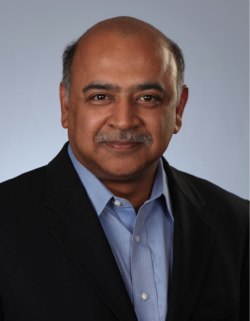The next generation of applications will be smarter — with built-in data, mobile and social capabilities — and it will be built on private clouds that run on Linux servers, says Arvind Krishna, general manager of development and manufacturing in the Systems & Technology Group at IBM. What’s still unclear, however, is the business model for delivering these future applications, he says.
 Arvind Krishna is general manager of development and manufacturing in the Systems & Technology Group at IBM.
Arvind Krishna is general manager of development and manufacturing in the Systems & Technology Group at IBM.
Krishna will present his vision of how such cloud applications will be delivered in his keynote talk at LinuxCon and Cloud Open in New Orleans, Sept. 16-18, 2013. Here, he discusses the role of Linux and open source software in the cloud, what a next generation workload will look like, the biggest challenges facing the cloud today and potential solutions.
Can you give us a preview of your keynote?
My presentation is entitled, “Linux, Cloud and Next Generation Workloads.” It is about the changes in our systems that are driving a new generation of applications and delivery methods. This next generation is built upon open source and open standards. IBM has been working with Linux for many years to help accelerate collaboration and innovation. And now, with our recent OpenPOWER announcement, the members of this new consortium can use POWER microprocessor technology to innovate even further.
What is a “next generation workload,” by your definition?
When I say next generation workloads, I’m referring to a new class of application solution that combines rapid access to massive amounts of data with advanced compute capabilities, to deliver simple, timely insights about complex systems. This involves any kind of big data, analytics, cognitive, mobile or social computing. The demands and opportunities presented in each of these computing areas are growing exponentially. These workloads are well-defined inside IBM under the SOE (system operating environment) or SDE (software defined environments) projects. They are things like V8, Node.js, MongoDB, etc. that are new, emerging applications in the Linux space.
